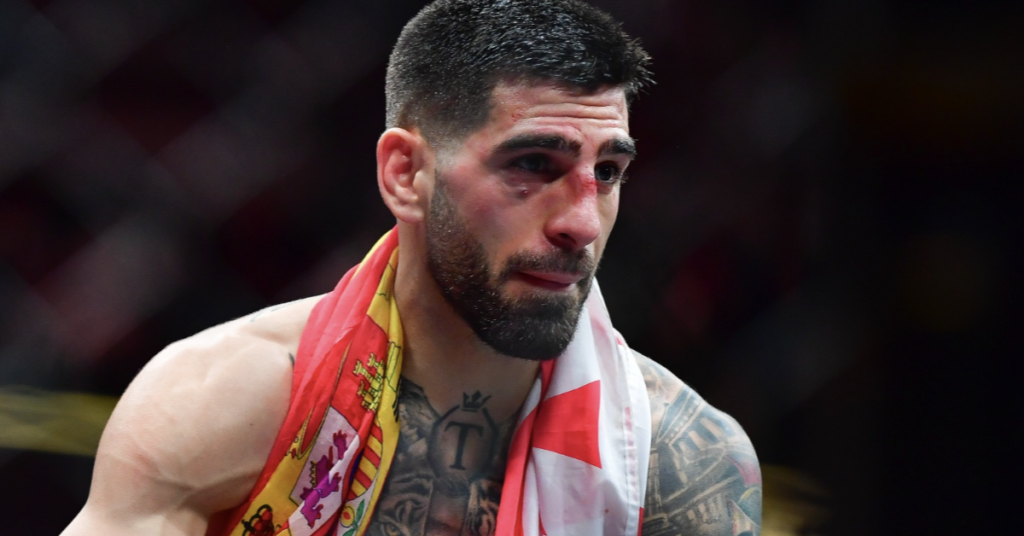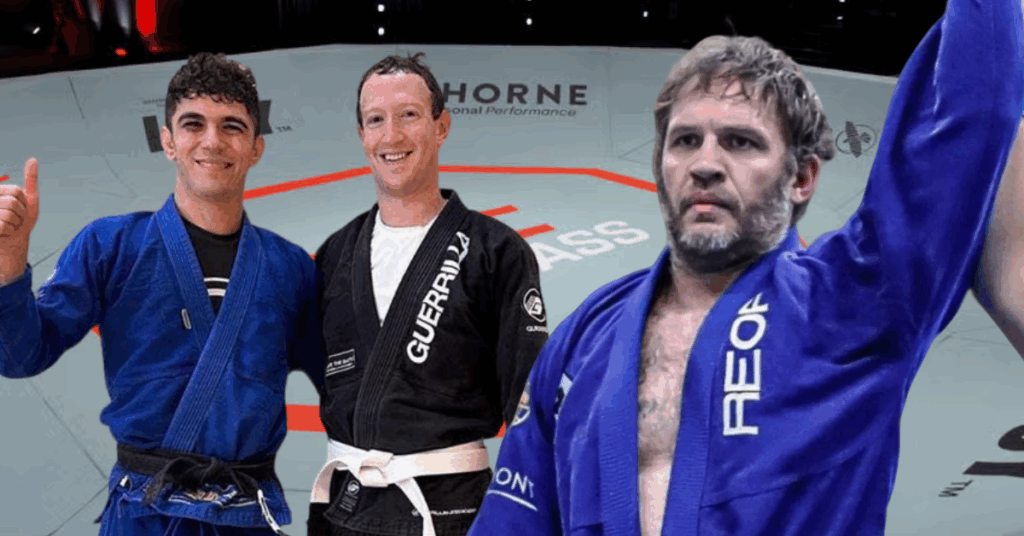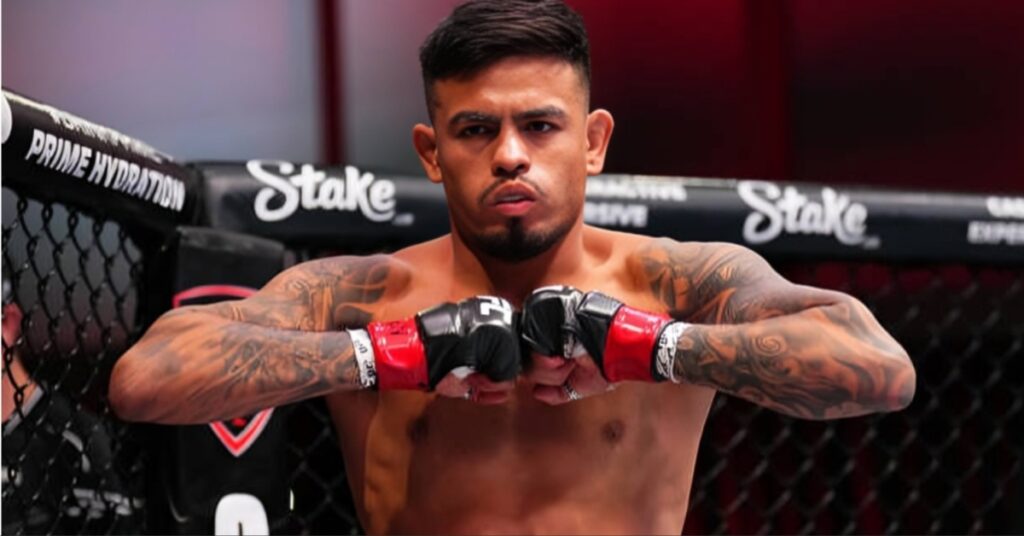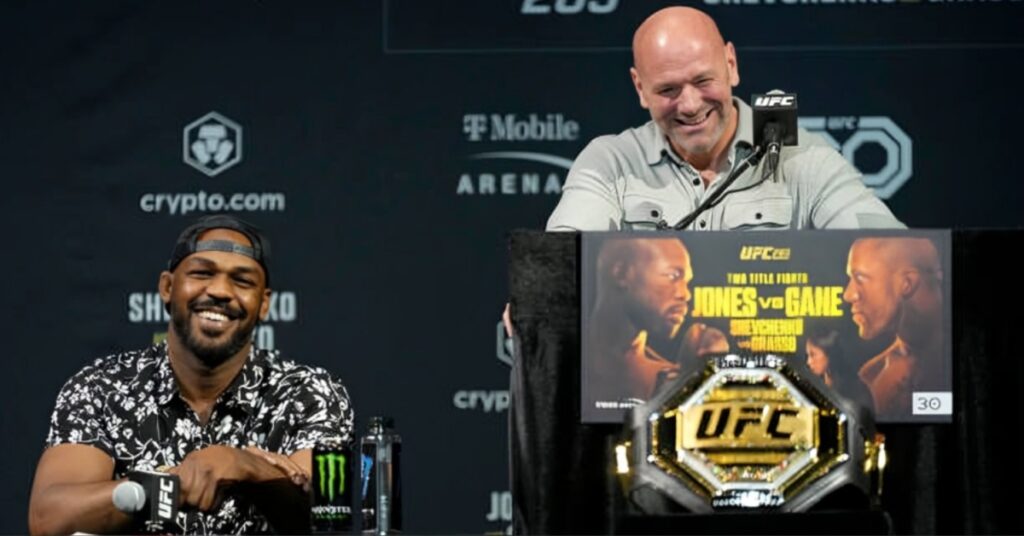Which Martial Arts Are In The Olympics?
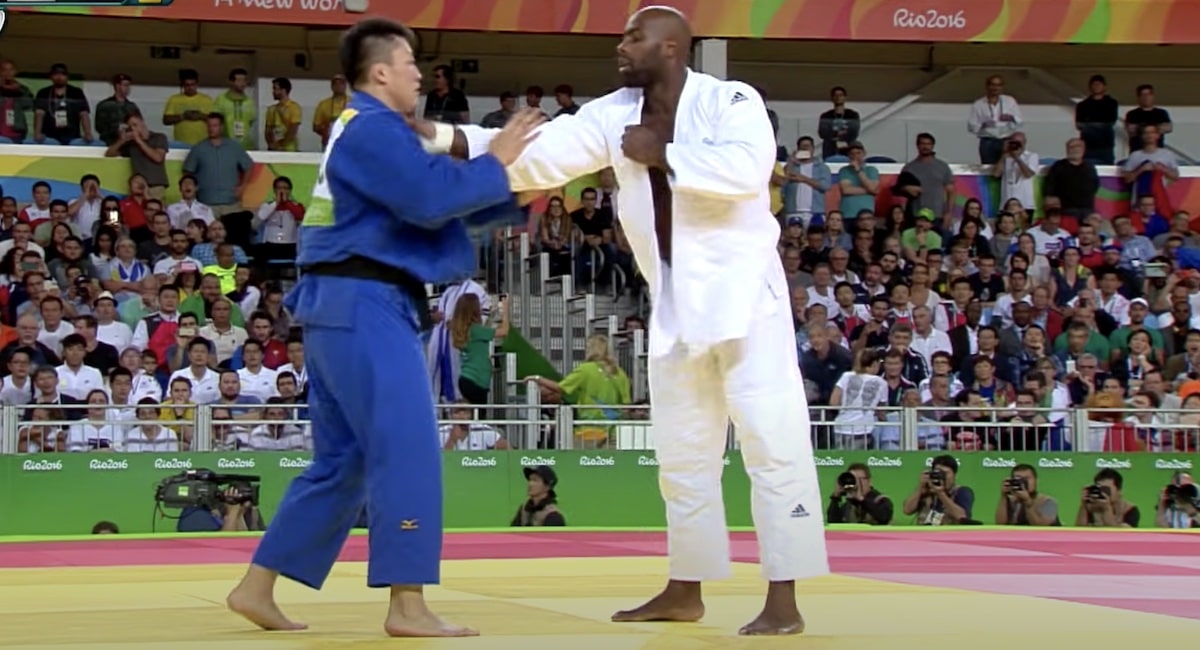
Every four years, the Olympics put on the biggest spectacle in sports. Tens of millions from around the globe watch the games, and some of the most popular is martial arts events.
Do you know which martial arts are in the Olympics? There are quite a few, and below we’ve listed all the martial arts that are Olympic sports. Read about all the martial arts that are Olympic events and their histories below.
Which Martial Arts Are In The Olympics?
As of now, six martial arts are official sports in the Olympics. The martial arts that are Olympic sports are as follows.
- Greco Roman Wrestling
- Freestyle Wrestling
- Boxing
- Judo
- Taekwondo
- Karate
(Disclaimer) We understand that many don’t consider wrestling or boxing martial arts. However, they do play a vital part in mixed martial arts and are a form of self-defense. For those reasons, we considered both boxing and wrestling martial arts.
Greco Roman Wrestling
Greco-Roman wrestling was one of the first official Olympic sports when the Olympics were reintroduced. This form of wrestling debuted in the first Olympic Games in 1896.
When the first Olympic event was being organized, Greco-Roman wrestling was an easy choice for being included. The original Olympics had wrestling events, and at the time, Greco-Roman wrestling was the most popular style of wrestling.
In the 100+ years in the Olympics, there have been numerous Olympic champions in Greco-Roman wrestling. Without this form of wrestling first being introduced, the other martial arts in the Olympics may have not gotten a chance.
The Rules Of Olympic Greco-Roman Wrestling
- 2 Periods(3 Minutes Each)
- Uniforms: Wrestling Singlets and Shoes
- Only Takedowns Above The Waist Are Permitted
- Methods Of Victory: Pin, Points, or DQ
- 8 Point Lead = Automatic Win
- Takedowns: 2-5 Points
- Reversal: 1 Point
- Exposure: 2-3 Points
- Penalties: 1-2 Points
- Out Of Bounds: 1 Point
Freestyle Wrestling
Freestyle wrestling was the second form of wrestling accepted as an Olympic sport after Greco-Roman wrestling. The story behind freestyle wrestling becoming an Olympic sport is an interesting one.
Initially, catch wrestling was supposed to be the second form of wrestling to become an Olympic sport. Unfortunately for catch wrestling, the Olympic committee canceled the event at the last minute.
The cancellation was due to submissions being permitted in catch wrestling, and the committee did not want injuries from submissions. Instead, they would adopt freestyle wrestling, which was a newer form of wrestling that was being practiced in the United States.
This form of wrestling would debut in the Olympics in 1904, where only American wrestlers participated. As time went on, freestyle wrestling caught on internationally and even surpassed Greco-Roman wrestling’s popularity.
Today, freestyle wrestling is the world’s most practiced form of wrestling.
The Rules Of Olympic Freestyle Wrestling
The rules of freestyle wrestling in the Olympics are very similar to Greco-Roman style wrestling. The big difference is that takedowns and throws above the waist are permitted in freestyle wrestling.
Boxing
During the late 1800s, the sport of boxing began to become more popular throughout the world. Much in part thanks to the introduction of the Queensberry Rules that organizers adopted.
Since an early form of pugilism was in the ancient Olympics, it was an obvious choice to be included. Boxing became an official Olympic sport in 1904, the same year freestyle wrestling made its debut.
Since its debut in the Olympics, boxing has undergone various changes. Everything from the rule sets, adding different weight classes, adding headgear, and then removing headgear.
The Rules Of Olympic Boxing
- 3 Rounds(3 Minutes Each)
- Ways To Win: KO/TKO, Decision, Or DQ(No Draws)
- Only Punches Above The Waist
- Punches Only Permitted To Front Of Opponent’s Body
Judo
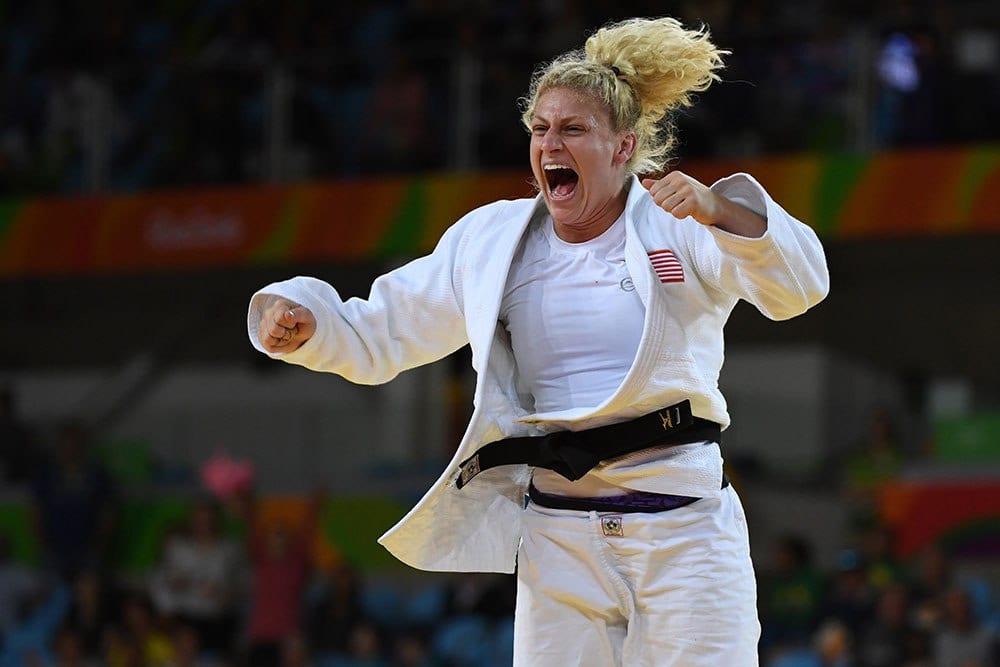
The grappling art of Judo became an official Olympic sport in 1964. The creator of Judo, Grandmaster Jigoro Kano, was actually on the original Olympic Committee.
He was the first Asian committee member and held the position until his death in 1938. Kano’s martial art would debut in the Olympics in 1964 but was excluded from the 1968 games.
In 1972, Judo returned as an Olympic sport and has kept its status as an official event for 50 years. As time went on, the Olympics added more weight classes and women’s divisions in 1992.
Judo is still one of the most popular events viewed by spectators and one of the biggest championships within the sport.
The Rules Of Olympic Judo
- Match Length: 5 Minutes(Men) 4 Minutes(Women)
- Ways To Win: Ippon, 2 Waza Aris, Hansoku Penalty, 4 Shido Penalties
- Golden Score: Any point landed in during the overtime round that is an automatic win.
Taekwondo
Taekwondo made its debut as a demo event at the 1988 Olympics in Seoul, South Korea. After twelve years of bureaucracy, Taekwondo was made an official Olympic sport in 2000.
An astounding feat for the Korean martial art, which had officially formed around 40 years beforehand. In that time, Taekwondo became internationally practiced by over 70 million practitioners.
The Rules Of Olympic Taekwondo
- 3 Rounds(2 Minutes Each)
- Uniforms: Headgear, Chest Protector, TKD Gloves, Shin Guards, Foot Guards
- Punches: 1 Point
- Kicks To The Body: 2 Points
- Head Kicks: 3 Points
- Turn Kicks To The Head: 5 Points
- Minor Penalties: 1 Point
- Ways To Win: TKO, Points 20 Points Lead
- Gold Point: The first point scored during sudden death wins the match
Karate
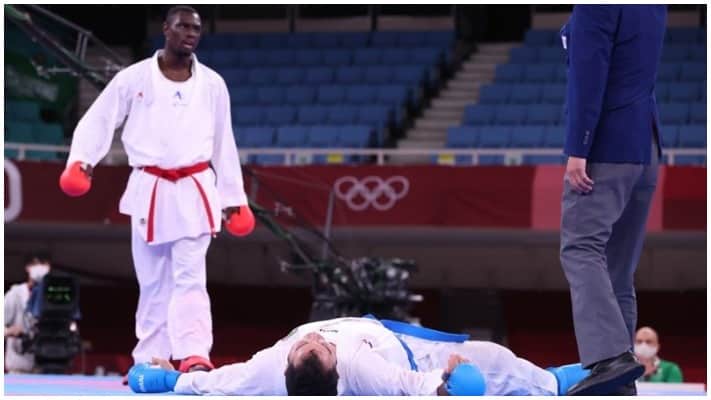
Karate is the latest martial art to receive the honor of becoming an official Olympic sport. It was added to the 2020 Olympic Games that were to be held in Japan. The birth country of the martial art.
Unfortunately, due to Covid-19, the Tokyo Olympics were postponed for over a year. In 2021, Karate would be one of the four new sports that would debut in the Tokyo Olympics.
It was met with positive reviews and will return in 2024 for the Olympics Games in Paris, France.
The Rules Of Olympic Karate
- 1 Round Of 3 Minutes
- Uniform: Karate Gi, Headgear, Shin Guards, Chest Protector, Shin Guards, Foot Guards
- Yuko: 1 Point Body Punches
- Waza-Ari: 2 Point Body Kicks
- Ippon: 3 Point Head Kicks(Also any technique where an opponent falls)
- Ways To Win: KO/TKO, Points, Golden Score, DQ
What Martial Arts Could Be Future Olympic Sports
There are always rumors and conversations about which martial arts could be future Olympic sports. Here are three martial arts that are constantly brought up in conversation.
Brazilian Jiu Jitsu
Brazilian Jiu Jitsu is one of the martial arts that is brought up most about potentially becoming an Olympic sport. It seems like it would be a perfect addition along with Judo and wrestling.
The one big thing that is holding BJJ back from becoming an Olympic sport is the IOC. They don’t recognize any of the major Jiu Jitsu federations as the official governing body of the martial art.
Until the IOC recognizes one of the federations like the IBJJF, BJJ will never become an Olympic sport.
Muay Thai
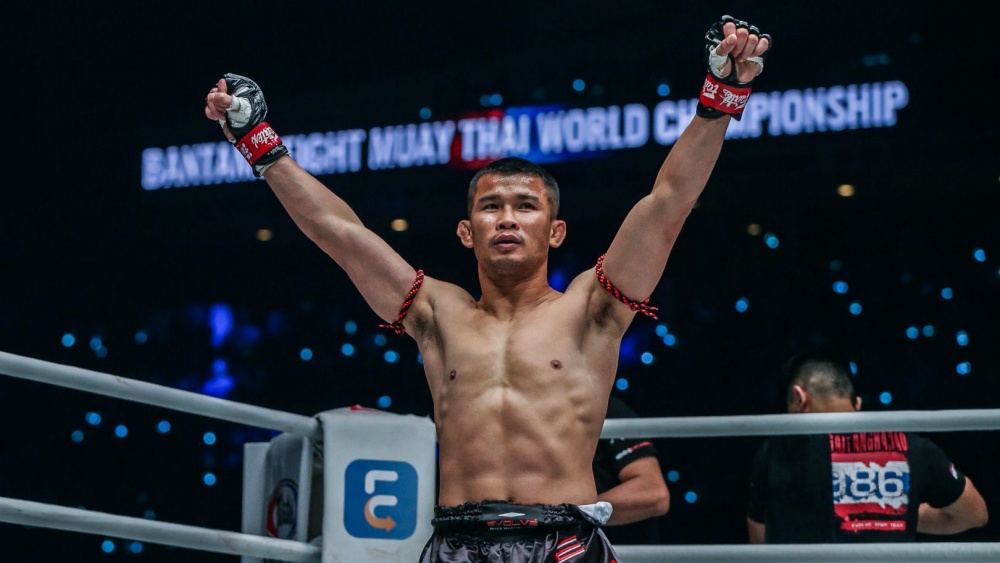
Muay Thai may actually be the next martial art to become an official Olympic event. After over thirty years of trying, the IOC fully certified Olympic sport.
The IOC granted the International Federation of Muay Thai Associates (IFMA) permanent membership on the committee. This decision was made at the 138th IOC session in Tokyo on July 20th, 2021.
Even though Muay Thai has been approved as an Olympic sport, it has no set debut date. We most likely won’t see Muay Thai in the Olympics any time soon due to IOC bureaucracy. Read more on this story here.
MMA
The International Mixed Martial Arts Federation (IMMAF) has been the main MMA federation pushing for MMA to become an Olympic sport. This federation was also granted WADA status for athletes within the federation to be drug tested.
For MMA to get a better chance at becoming an Olympic sport, the IMMAF must be recognized by the IOC. UFC President Dana White supported the IMMAF and believes if the Olympics wants viewers, they must add MMA.
Sambo and Kickboxing
The IOC has granted sambo and kickboxing provisional recognition along with Muay Thai. Although, it is unknown when we might see these martial arts in the Olympics.
We could see them in the 2024 Olympics in Paris or another event in the future.
Summary
Martial arts are perfect sports for the Olympic Games. If you were wondering which martial arts are in the Olympics, there are already six martial arts that are official Olympic Sports, and we may see three more added in the coming years.
This is great news for fight fans and gives these martial arts the opportunity to grow. If the Olympics does add Muay Thai, Sambo, and kickboxing, more fight fans will definitely be tuning in.


